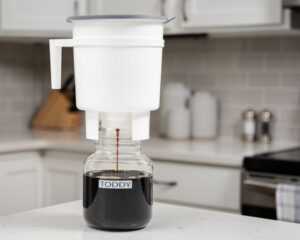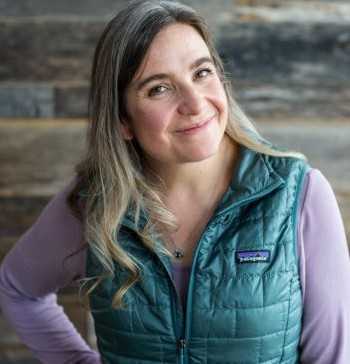MILAN – Based in Colorado, the origins of the Toddy brand date back to 1963, from the tasting of a cold brew served hot in the mountains of Peru: when this drink was not yet so globally popular – by then it had even reached the home of espresso in specialty coffee shops – this company decided to replicate this method by developing its own extraction system. Currently led by Julia Leach, president of Toddy, LLC, we spoke with them to discover the peculiarities of their enterprise.
Toddy’s origin story dates back to 1964. What was cold brew back then, and what has it become today?
“Cold brew coffee legend and lore exists from as early as the 1800s, but “cold brew” wasn’t really a term until much more recently. In the early days, cold brew was usually consumed hot and was embraced as a brewing method independent of the serving temperature. Today, cold brew holds a large market share and has even evolved into its own beverage category. Consumers around the world – many of whom didn’t drink coffee before discovering cold brew – now regularly enjoy cold brew.”
Toddy is managed and owned by women. This seems like an important milestone for such an advanced business. What does this business value represent for you?
“Well, we’re in good company. According to the 2020 National Women’s Business Council Annual Report, around 42 percent of all US businesses are owned by women, which is roughly 13 million entrepreneurs who collectively earn almost $2 trillion in revenues. I’m happy to see so much growth in this area, because I feel like the best businesses are those that employ individuals from different backgrounds, with dramatically different perspectives.
Personally, I like to think that women in the US are often brought up to be master multitaskers who can consider more than just the financial implications of the business world. Running a successful business these days can be both incredibly complicated and incredibly rewarding, so it feels like you have to have strengths in spotting and responding to market trends, finding and supporting exceptional team members, and always being ready to change course when required.”
In which markets have you established yourself, and where would you still like to penetrate? Is Italy as a country ready to welcome cold brew and Toddy?
“As an international company, Toddy exports cold brew solutions to approximately 60 countries around the world. While we are currently present in most regions, we would like to increase our presence in a few markets such as South America, Africa, and Southeast Asia.
Italy specifically is still more of a traditional espresso-based coffee market, but cold brew has been embraced and is starting to gain significant market share there. The Italian market appreciates quality coffee, and our Italian partners are some of our best-educated advocates for cold brew. They understand cold brew is a complement to (rather than a competitor of or replacement for) an espresso-based business.
Over the past few years, we’ve been increasing our participation in European coffee industry events and shows such as Host Milano and most recently, World of Coffee Milan. Consumer awareness is growing, so we see Italy as a solid emerging market with great growth opportunities for cold brew. High coffee standards and expectations in Italy align with our brand commitment to exceptional cold brew coffee.”
What is your target?
“While we don’t have a singular “target,” we’re driven by the opportunity to educate everyone about cold brew. To do what we can to make cold brew readily accessible and simplify the brewing process, we host training sessions and participate in a number of international coffee conferences each year, including World of Coffee, SINTERCAFE, and the Producer & Roaster Forum, where we hosted our inaugural Cold Brew Competition. In addition, we are in the process of developing Toddy Education, our cold brew-focused coffee school, where we’ll host cold brew courses and provide cold brew program consulting from our headquarters in Loveland, Colorado.
Ultimately, our goal is to help cold brew enthusiasts, cafe owners, baristas, roasters, and food service professionals get their questions about cold brew answered. We want everyone to love cold brew as much as we do.”
What is “the Toddy difference”?

“Cold brewing with Toddy involves a thoughtful, intentional brewing method. Each step has been meticulously considered, tested, and replicated to deliver an unparalleled cold brew extract that showcases the best attributes that coffee and tea have to offer. We put in ample hours of research and testing to ensure that the process is food-safe (and nearly foolproof) for those brewing. We’re heavily invested in food safety research and committed to food safety best practices to give Toddy customers accurate and timely information about how to keep their cold brew both delicious and safe to consume regardless of their preferred brewing solution and the environment in which they’re brewing.
Cold brew made the Toddy way starts with high-quality coffee beans or tea leaves, which are added to strong, proprietary Toddy® filters. Both our paper and tree free filters have been engineered to accommodate longer brew times while removing unwanted fines and sediment without imparting flavor of their own. From there, we add water that’s been filtered to include an optimal mineral mix that brings out the intended roast flavor – and let it all steep for 8 to 24 hours at room temperature. The immersion brewing method maximizes the contact time between the coffee grounds and the water. And while cold brew stored in an airtight container in the refrigerator will retain its flavor for up to 10 days, we find that it is consumed long before that.”
Why would a bartender want to have cold brew on their menu today?
“Bartenders tend to appreciate ingredients that can serve multiple purposes, which describes cold brew perfectly. Pour a nitro, shake up a martini or any number of other cocktail options, or use it as a foundational ingredient for nonalcoholic craft beverages. Most mixologists also appreciate the inherent efficiency associated with cold brew; pouring concentrate from a batch brew is faster and far less involved than pulling single shots of espresso.
With today’s consumers looking for healthier alternatives than sugar – laden energy drinks, cold brewed coffee and tea offer a more natural energy boost – and also pair well with fruit juices, seltzer waters, and nondairy choices. Because cold brew beverages resonate with virtually anyone who likes coffee or tea, cold brew concentrate is an extremely versatile and valuable ingredient to have on hand.”
And would a consumer, on the other hand, be interested in a homemade cold brew? Has the home bar also grown because of the sales of Toddy equipment with the pandemic?
“Yes, I’d say that sales of our home cold brew equipment were positively impacted by the pandemic and the temporary closures of cafes. Coffee in general is such a ritual in many people’s lives, and I feel like with all of the fear and uncertainty associated with the pandemic, we were all searching for some element of normalcy to focus on. Cold brew gives us delicious coffee that can be brewed once and enjoyed in a variety of ways, it minimizes waste, and the brewing process itself is relatively straightforward. And it seems like those of us who were locked down at home for longer periods of time possibly shifted from cafe consumption to enjoying several coffee beverages throughout the day at home.”
If you could describe the next 10 years of this method, what would you, who were among its pioneers, tell us?
“Right now, we’re seeing a huge push toward the development of quality cold brew programs. Cafes and other food service providers are discovering that it’s no longer sufficient to have an iced coffee or two on the menu. The increase in demand for cold brew is coupled with greater consumer sophistication; more and more customers are able to differentiate between cold brew and iced hot brew. The result is that baristas are fielding more consumer questions about cold brew, and coffee enthusiasts are looking to supplement their cafe visits with the ability to make their own quality cold brew at home.
A great side effect of the increase in interest is that cafe owners and managers are no longer using “whatever beans are on hand” to brew, but specifically selecting high-end coffees based on how they perform when brewed cold. And roasters are being asked to develop roast profiles that showcase the nuanced flavors of the cold brew method.”
What about the next 10 years of Toddy?
“We’re looking forward to seeing what the next 10 years will bring. Over the next decade, we’re expanding our role as a cold brew industry leader, renewing our focus on cold brew solutions for the home. In addition, we’re educating coffee professionals to help their customers master and experiment with the brewing method and enjoy the process of selecting the best beans for their cold brew.
As an international company, Toddy is working to develop cold brew equipment based on the trends and needs identified during our visits to countries around the world. The best tools for the US market are not necessarily the best tools for Europe or Asia. We enjoy collaborating with our partners and distributors to create cold brew solutions that will succeed in their particular region while helping customers fall in love with cold brew.”

















